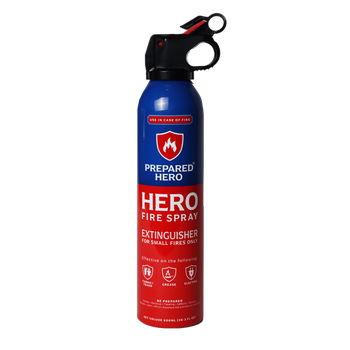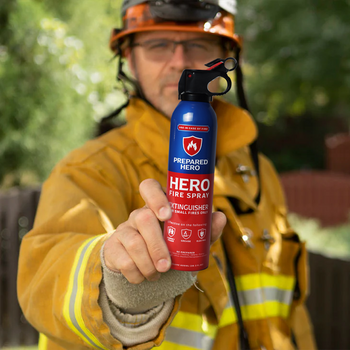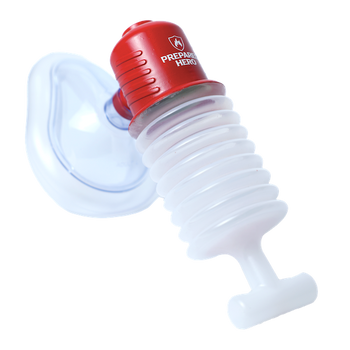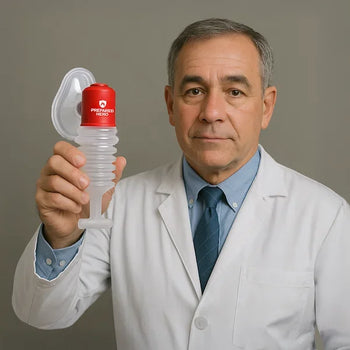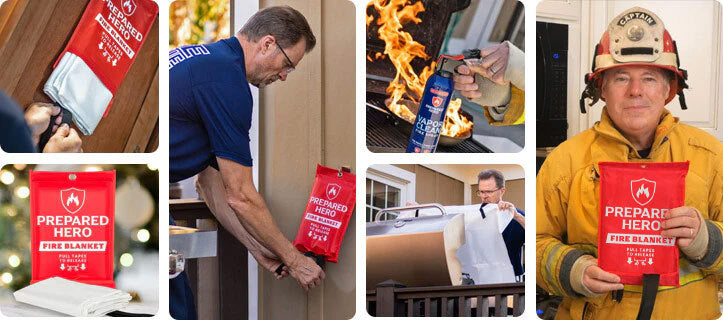Where you put your smoke detectors matters just as much as installing them. Proper placement makes sure they can detect...
Dishwashers make cleaning up easier by handling the dirty work for you. But how hot does a dishwasher get? Does it become hot enough to sanitize your dishes? How does it work? Find out the answers to these questions below.
How Dishwashers Work

First, the dishwasher fills with water from your home's supply. If the water isn’t hot enough, a heating element at the bottom heats it up. Once it reaches the right temperature, the detergent gets released from a small compartment.
Then, things move. A pump pushes the hot, soapy water via spinning spray arms. These arms then shoot the water onto your dishes from all angles. This blasts off food and grime. After this, the dirty water drains out.
Next comes the rinse cycle. Fresh, clean water comes in, sprays the dishes again, and drains out. This clears off any leftover soap.
The drying cycle comes last. Some dishwashers use heat to dry your dishes, while others use a fan to blow air. A rinse aid can help make things quicker and stop water spots from forming.
A dishwasher includes key parts like racks for dishes, a silverware basket, spray arms, the detergent dispenser, and a control pad to choose your settings. There’s also a pump and motor to power the spray arms, a filter to catch food bits, and a latch to keep the door shut when in use.
Do Dishwashers Actually Heat the Water?
Yes, most dishwashers actually heat the water. Even though they’re hooked up to your home’s hot water line, many dishwashers have a heating element built in. This sits at the bottom of the tub and can heat the water up, especially for sanitizing cycles.
You see, hot water is important for dishwashers. It helps break down food and grease, activates the detergent, and thoroughly cleans your dishes. Hot water also helps with drying since it makes things evaporate faster. As a result, your dishes don’t come out dripping wet.
Some dishwashers start with cooler water, then heat it up inside. This uses energy efficiently. So if your home’s water isn’t hot, your dishwasher can still get the job done.
How Hot Does a Dishwasher Get?

Dishwashers get hot, and for good reason. Most models heat water between 130 and 140°F (54.4 and 60°C) during the main wash cycle. This temperature range helps break down grease, remove food, and activate detergent. But it doesn’t stop there. The rinse cycle gets even hotter, with some units reaching up to 180°F (82.2°C). This temperature helps kill bacteria and makes drying faster.
Dishwashers with sanitize settings can hit temperatures of 170°F (76.6°C) or higher, which is ideal for disinfecting. Even though dishwashers connect to your home’s hot water line (usually around 120°F or 48.8°C), they often have a built-in heating element that boosts the temperature to where it needs to be.
Plus, some commercial or high-temperature dishwashers run at even higher levels of 165 to 180°F (73.8 to 82.2°C), especially during the rinse cycle. This makes sure the dishes get sanitized.
That said, high heat can damage delicate items, so check your dishware before tossing them in. While dishwashers are designed to balance heat, performance, and safety, it’s better to be careful than sorry.
Do Dishwasher Temperatures Change Based on the Cycle?
Yes, dishwasher temperatures can change based on the cycle you choose. Each cycle is designed to handle different cleaning needs, so the heat levels vary. Residential dishwashers run between 120 and 150°F (48.8 and 65.5°C) on average. However, the temperature can go higher during sanitizing or rinse cycles, sometimes up to 170°F.
For example, the regular wash cycle heats water enough to dissolve detergent and remove food, which is usually around 130 to 140°F. Sanitizing cycles go hotter to kill germs. Some commercial dishwashers hit 180°F, especially for a final rinse.
Newer energy-saving models use lower temperatures but still clean well thanks to added features like powerful spray arms, filters, and heated drying. Some machines also let you adjust the temperature or choose cycles based on how dirty the load is. For instance, a hotter cycle works better if you're washing greasy pots. On the other hand, a cooler cycle is safer for delicate items. Dishwashers also come with safety features like sensors, fuses, and shut-off systems to avoid overheating.
What Is the Best Temperature for Dishwashers?

The best temperature for dishwashers is between 120 and 150°F. Most dishwashers run their main wash cycle at 130 to 140°F. This heat level dissolves detergent and breaks down grease. During the rinse, the water gets even hotter, sometimes up to 180°F, to make sure your dishes are clean and safe to use.
Dishwashers mainly rely on your home’s hot water supply, so you should check your water heater settings. Many are set at 120°F, but water can cool down before reaching the dishwasher.
You should also not set your water heater above 150°F. Too much heat can damage some dishes, especially plastics and rubber. Some dishwashers with sanitize cycles boost the temperature higher during rinsing to kill germs. So, keeping your water temperature between 120 and 150 degrees cleans your dishes without harming them.
Do Dishwashers Get Hot Enough to Sterilize?
Most dishwashers don’t get hot enough to sterilize your dishes. Sterilization means killing every single germ, which requires extremely high heat (about 250 to 264 °F or 121 to 129°C) for several minutes. That’s way hotter than what regular dishwashers can do.
Home dishwashers usually heat up to around 160°F (71°C) during their hottest rinse. This temperature is enough for sanitation but not for sterilization. Sanitation reduces the number of germs to a safe level. This makes your dishes clean and safe to use, but not completely germ-free.
Commercial dishwashers have a sanitize cycle that raises the temperature to help kill more bacteria, usually reaching about 180°F. In short, dishwashers sanitize your dishes, but they don’t sterilize them like special hospital machines do.
What Is the Highest Temperature for a Dishwasher?

The highest temperature for a dishwasher is 180°F. Dishwashers usually run between 130°F and 140°F during the main wash, but can go higher. This higher temperature happens mostly during the sanitize or final rinse cycles.
Going above 150°F means the dishwasher gets hot enough to sanitize your dishes. However, it comes with some risks. High temperatures can damage parts like rubber seals or plastic tubs, especially in dishwashers without stainless steel interiors. Those with stainless steel can handle the heat better. However, they still shouldn’t go too high.
Commercial dishwashers often use these higher temps. They wash between 150°F and 165°F and rinse between 165°F and 180°F to meet stricter sanitation standards.
How Hot Do Dishwashers Get When Drying?
Dishwashers get between 140 and 150°F when drying. This temperature range helps dry your dishes without being too hot to handle. It’s cooler than the steam from a boiling kettle or pot, so there’s no need to worry if you catch a quick whiff. Just don’t stick your hand in there. Overall, the drying heat is gentle but effective at finishing the job.
Can Dishwasher Temperatures Be Up to 200°F?

Dishwashers don’t usually get as hot as 200°F (93.3°C). Most wash cycles heat water at 130 to 140°F, and the rinse cycle can go up to 180°F for sanitizing. Plus, extremely high temperatures can damage parts inside your dishwasher, like the rubber seals and plastic pieces. While your dishwasher gets pretty hot, it’s designed to stay below 200°F to keep things working and clean your dishes.
What Temperature Kills Bacteria in the Dishwasher?
Bacteria get killed at temperatures above 149°F (65°C). This heat is enough to zap germs like E. coli, Salmonella, and Legionella. Dishwashers with a sanitize cycle usually reach this temperature or higher. Some use chemicals and need a minimum of 120°F to work properly.
The heat kills bacteria, not just washing off food. The National Sanitation Foundation (NSF) even requires dishwashers to reach 150°F to be certified for sanitizing.
Preventing Dishwasher Fires

Dishwasher fires are not common, but they happen. Don’t overload your dishwasher or block the spray arms to keep it safe. Make sure to clean the filter regularly to avoid food buildup that might cause overheating. Plus, only use dishwasher detergent designed for your machine. Using the wrong stuff can cause foam buildup.
It’s also smart to have fire safety tools nearby, like a fire spray and a fire blanket. They quickly put out small dishwasher fires before they turn into raging ones. Keep them within reach in your kitchen. Being prepared means you can protect your home and family if a dishwasher fire starts. Remember, simple habits and the right safety tools go a long way.
Conclusion
Dishwashers get hot, but they’re designed for it. High temperatures clean your dishes better, dry them faster, and kill germs. Whether it’s 130°F for washing or 180°F for sanitizing, each cycle has a purpose. Just be smart about what you load, clean your filter, and keep some fire safety tools nearby.
Do you want reliable, easy-to-use, and affordable tools to put out small dishwasher fires before they spread? Check out Prepared Hero’s fire prevention tools here, and get up to 51% off on certain items. Stay prepared, hero!


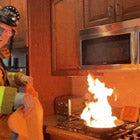 Fire
Fire Safety
Safety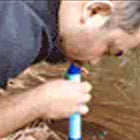 Survival
Survival Protection
Protection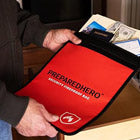 New
New
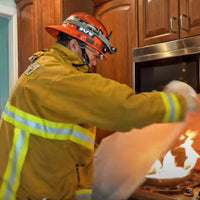 Fire
Fire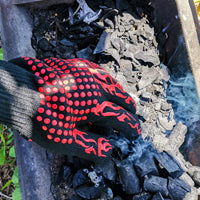 Safety
Safety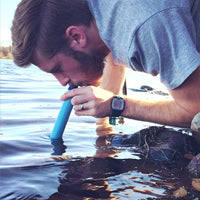 Survival
Survival Protection
Protection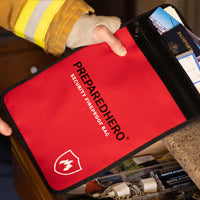 New
New


